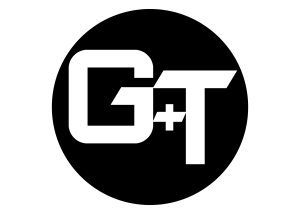Remembering the fallen warriors who have served our communities is an important part of patriotism in any country. In North America and the greater Commonwealth of Nations, two of the most popular ways in which this support is expressed is in the displaying of the red poppy and the yellow ribbon.
As with many traditions, the use of the red poppy grew from the popularization of a powerful poem that was written by a combat soldier actively engaged in battle. The author of the poem, Canadian Major John McCrae, was an artillery commander and medical doctor who had just lost a personal friend and fellow soldier, Lieutenant Alexis Helmer, to a German artillery shell in the Second Battle of Ypres in 1915. McCrae was asked to perform the burial service for Helmer and later that evening he wrote what would become the iconic poem “In Flanders Fields”.

In Flanders fields the poppies blow
Between the crosses, row on row,
That mark our place; and in the sky
The larks, still bravely singing, fly
Scarce heard amid the guns below.
We are the Dead. Short days ago
We lived, felt dawn, saw sunset glow,
Loved and were loved, and now we lie
In Flanders fields.
Take up our quarrel with the foe:
To you from failing hands we throw
The torch; be yours to hold it high.
If ye break faith with us who die
We shall not sleep, though poppies grow
In Flanders fields.
By: John McCrae
With the end of World War I at hand, in 1918 two volunteers working with the YMCA, the American Moina Michael and French Anna Guerin, met at a conference in New York and were inspired by the poem to initiate a fundraising campaign of wearing red poppies in remembrance of soldiers killed in the war.
Oh! you who sleep in Flanders Fields,
Sleep sweet – to rise anew!
We caught the torch you threw
And holding high, we keep the Faith
With All who died.
By Moina Michael
Michael and Guerin actively promoted the red poppy initiative to veterans’ associations including the British and American Legions which soon accepted it as an official symbol and quickly spread through the Commonwealth. As a fundraising tool for post-war efforts, artificial poppies were made – often by hand by disabled and rehabilitating veterans – and today are sold by the millions to support veterans’ programs.
Veterans Day and the Yellow Ribbon
The red poppy continues to be the primary symbol of Remembrance Day celebrated each year on the 11th of November in the over 50 sovereign states that form the Commonwealth of Nations including the United Kingdom, Canada, Australia, New Zealand, and more. The United States of America, however, associates red poppies with Memorial Day, which is observed on the last Monday of May each year. Instead, the US observes Veterans’ Day on November 11th and the popular symbol has become the yellow ribbon, usually worn on clothing or tied around a tree.
The origins of the yellow ribbon are a bit muddied but are certainly more recent than those of the red poppy. Claims to the rights of songs referencing yellow ribbons have been litigated and many assumptions have been made as to who originally started the trend. According to the Library of Congress, however, evidence points unanimously to the tradition’s origin as a means to welcome home a prisoner. One of the earliest popular uses of the yellow ribbon was in response to the Iran hostage crisis from 1980-1981, during which yellow ribbons adorned trees across the country in a sign of solidarity and support for the US citizens in captivity. Later in the Gulf War of 1991, the yellow ribbon again returned to the public eye as a reminder of those fighting abroad and waiting for their safe return home.

Today, communities across the western world will remember those who have fallen in wars past and who continue to fight for our countries today. No matter the tradition or symbols we choose for our communities, supporting those who fight for our nations is essential to our society’s strength and the preservation of our histories.













[…] This article was originally published on http://www.GunsandTactics.com. […]
Comments are closed.